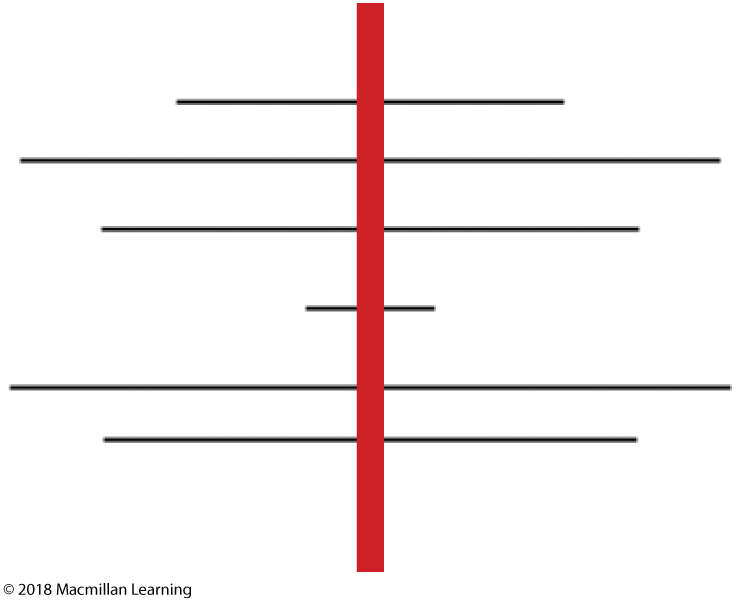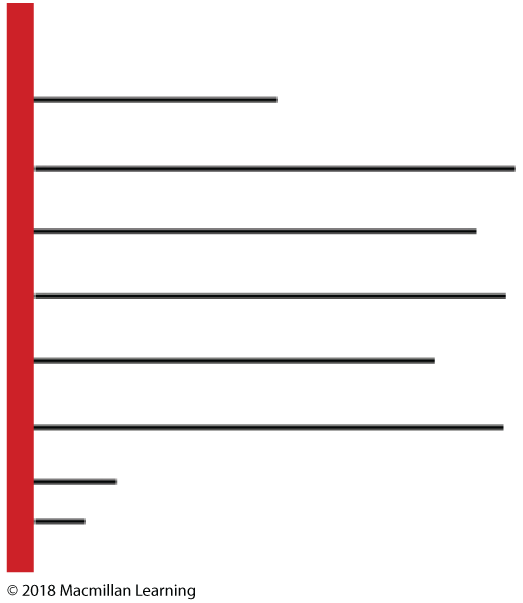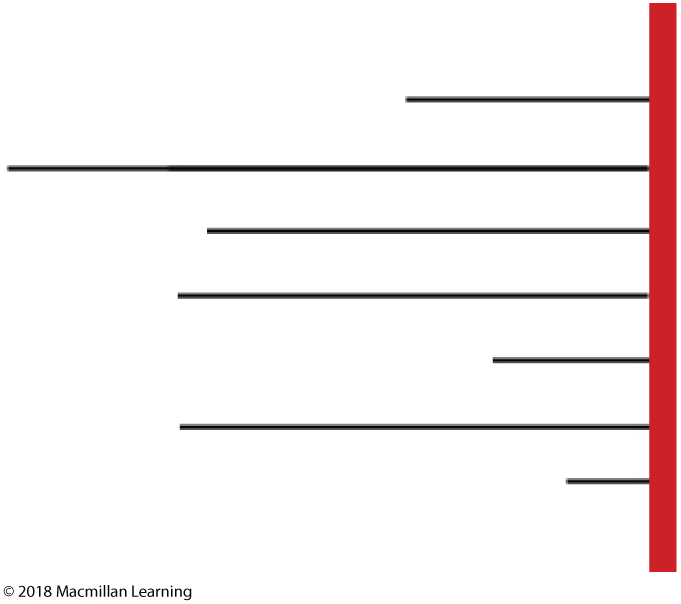Chapter 3. test
Introduction
Reading Visuals: Alignment
© 2018 Macmillan Learning
Alignment: Define

Alignment: Define

A strong left alignment gives us something to follow visually—even elements that contrast in size can demonstrate coherence through a single alignment. This particular example mimics the look of written text, but also consider the strength of an alignment between different kinds of elements, including text and images, on a single page or screen.
Alignment: Define

A strong right alignment creates a hard edge that connects disparate elements. It can be useful to group things in a clear, interesting way.
Alignment: Analyze

A table of contents (TOC) is grouped information from a larger text. It needs to present itself clearly, in a way that allows readers to quickly see a text’s overall organization and contents. A strong alignment can help readers scan the text quickly. In this example from a digital book meant to be read online, there are a lot of navigation elements on the screen and a strong left alignment for all groups of elements.
Alignment: Analyze

Although other items such as the “intro,” “forword” [sic], and “bios” (at the bottom-left) are bigger in size and different in color, their unusual rotation indicates that these elements are much less important than the chapter titles in understanding at a glance what the book is about. This “frontmatter” group of elements is still left-aligned, but the nontraditional rotation encourages readers to view the list of chapters instead.
Alignment: Analyze

In this early version of the design, two sets of left alignments are used for the chapter listings. The intent was visual diversity, but this design was soon nixed because the editors thought it was misleading. Consider how the problem of clarity was fixed through consideration of alignment.
Alignment: Respond

Work through the following questions to use the concept of alignment to analyze this illustration. Then submit your responses.
Alignment: Respond

Use the space below to answer the following questions.
Alignment: Respond

Use the space below to answer the following questions.
Alignment: Respond

Use the space below to answer the following questions.
Alignment: Respond

Use the space below to answer the following questions.